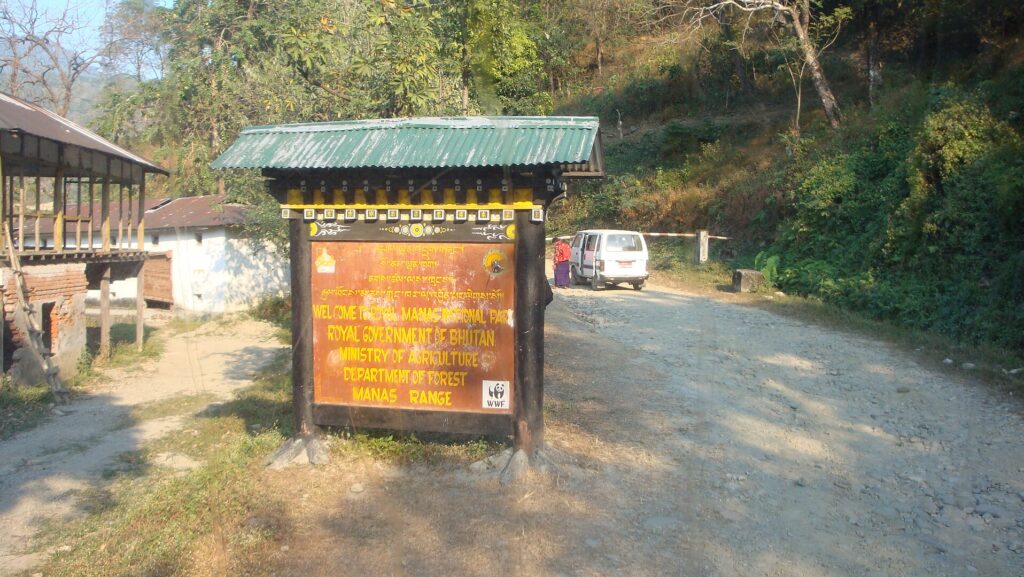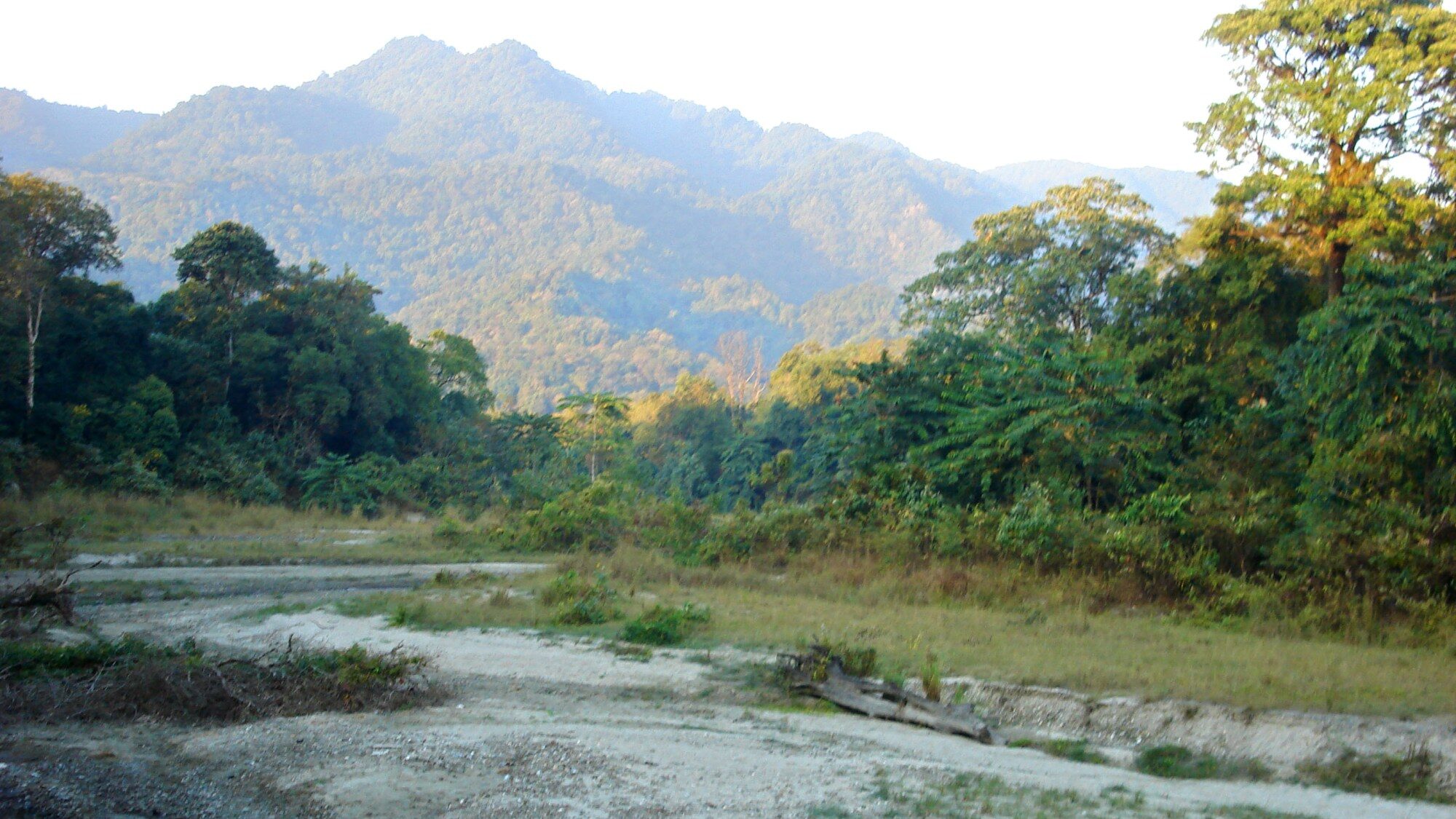Book Your Safari
Complete the form below to reserve your safari. Our team will confirm your booking and offer further details.
Complete the form below to reserve your safari. Our team will confirm your booking and offer further details.
Share your travel dreams, and we'll craft a personalised itinerary for you!
The quote provided is an estimate based on the information you supply. Final pricing may vary based on availability, changes in travel dates, and additional details.

Tucked away in Bhutan’s southern belt, bordering India’s Assam and West Bengal, lies one of South Asia’s most biologically diverse ecosystems—Royal Manas National Park. Known as the “conservation showpiece of the Kingdom,” this UNESCO tentative site offers a rare blend of tropical and subtropical habitats that support some of the planet’s most endangered wildlife species. Unlike Bhutan’s alpine parks, Royal Manas is a world of warm forests, winding rivers, and vibrant biodiversity—still largely unexplored by international tourists.
What makes this park special isn’t just its list of species, but how undisturbed and authentic it remains. If you’re seeking wildlife encounters beyond the usual safari circuits, this is where you’ll find them.

Royal Manas spans across 1,057 square kilometers and stretches over three districts: Sarpang, Zhemgang, and Pemagatshel. It shares a porous southern boundary with India’s famed Manas Tiger Reserve, forming a crucial part of the larger transboundary conservation landscape.
The park ranges from 100 to over 2,000 meters in elevation, creating a wide spectrum of microclimates—from lowland tropical forests to cool montane environments.
The park is Bhutan’s oldest protected area, declared a wildlife sanctuary as early as 1966 and upgraded to national park status in 1993. Historically, it served as the royal hunting grounds—hence the name “Royal Manas.”
Today, it is a symbol of Bhutan’s conservation-first philosophy, tightly woven into the country’s Gross National Happiness strategy and environmental priorities.

Royal Manas National Park is home to more than 60 species of mammals. These include both globally threatened and charismatic species:
This is also one of the few places on Earth where tigers and elephants coexist with species like pangolins, hog deer, and even the rare pygmy hog.
With over 365 recorded bird species, the park is a birder’s paradise. Notable sightings include:
Birding tours in Royal Manas often yield high success rates due to the low visitor pressure and diverse ecosystems.
The park features several types of forests:
Over 900 species of vascular plants have been recorded, including rare orchids, medicinal herbs, and majestic dipterocarp trees. In fact, the park is part of the Eastern Himalayan biodiversity hotspot, one of the richest botanical zones in the world.

Royal Manas functions as a biological corridor that connects Bhutan’s northern protected areas with India’s Manas Tiger Reserve to the south. This linkage is crucial for wide-ranging species like elephants and tigers, allowing genetic exchange and healthier populations.
The park’s success is largely due to Bhutan’s community-based conservation model. Local villagers are involved in anti-poaching patrols, eco-tourism initiatives, and sustainable harvesting of forest products. This keeps both the environment and the local economy thriving.
Despite its remoteness, the park faces challenges:
The government, with international partners like WWF and UNDP, has stepped up efforts through patrol tech, camera traps, and cross-border collaboration with Indian park authorities.

Most travelers enter Bhutan via Paro International Airport, then travel overland to Gelephu or Panbang, the nearest gateway towns. From here, it’s a few hours’ drive into the park. Infrastructure is limited but improving.
The ideal time is from November to April—the dry season when wildlife is more active and trails are accessible. Monsoon season (June–September) brings lush greenery but also heavy rains and leeches.
Eco-tourism in Royal Manas is still in its infancy. Options include:
For a more polished wildlife circuit, combine this park with a luxury Bhutan tour or a custom wildlife itinerary offered by Asian Safaris.
Permits are mandatory and must be obtained through licensed Bhutanese tour operators. Independent travel is not allowed in protected areas.
While most travelers flock to Bhutan for its monasteries and mountain passes, Royal Manas National Park offers a radically different experience: warm jungles teeming with life, where tiger pugmarks crisscross elephant trails and hornbills fly overhead.
This park isn’t just important to Bhutan—it’s critical to the conservation fabric of the entire Eastern Himalayan region. Its transboundary role, biodiversity value, and community model make it a global example for tropical conservation done right.
At Asian Safaris, we design wildlife tours that go far beyond the ordinary. Our itineraries to Bhutan include in-depth jungle treks, birding expeditions, and community-led nature experiences in Royal Manas and beyond. If you’re already exploring parks like Chitwan National Park in Nepal or Yala in Sri Lanka, this park offers a compelling tropical contrast.
Start planning your journey to Bhutan’s most vibrant ecological gem. Get in touch with us to build a custom wildlife itinerary that includes Royal Manas National Park and more.
Royal Manas National Park is one of Asia’s best-kept wildlife secrets. It’s not as flashy as some of India’s tiger reserves, nor as touristy as Nepal’s Chitwan. But what it offers is something increasingly rare: raw, biodiverse wilderness protected by people who’ve lived with it for centuries.
If you’re looking to go off the map and into a realm where tropical biodiversity, cultural harmony, and conservation meet, this park deserves a place on your travel radar.
[…] Suggested Read Next: Royal Manas National Park: Bhutan’s Tropical Wildlife Haven […]